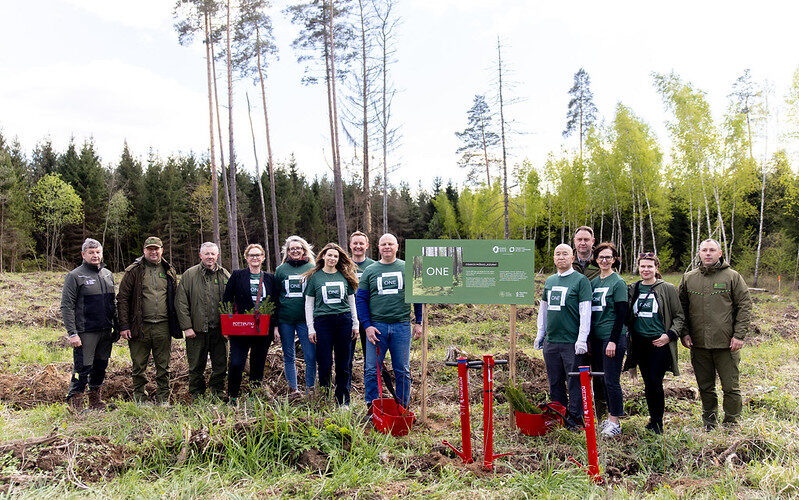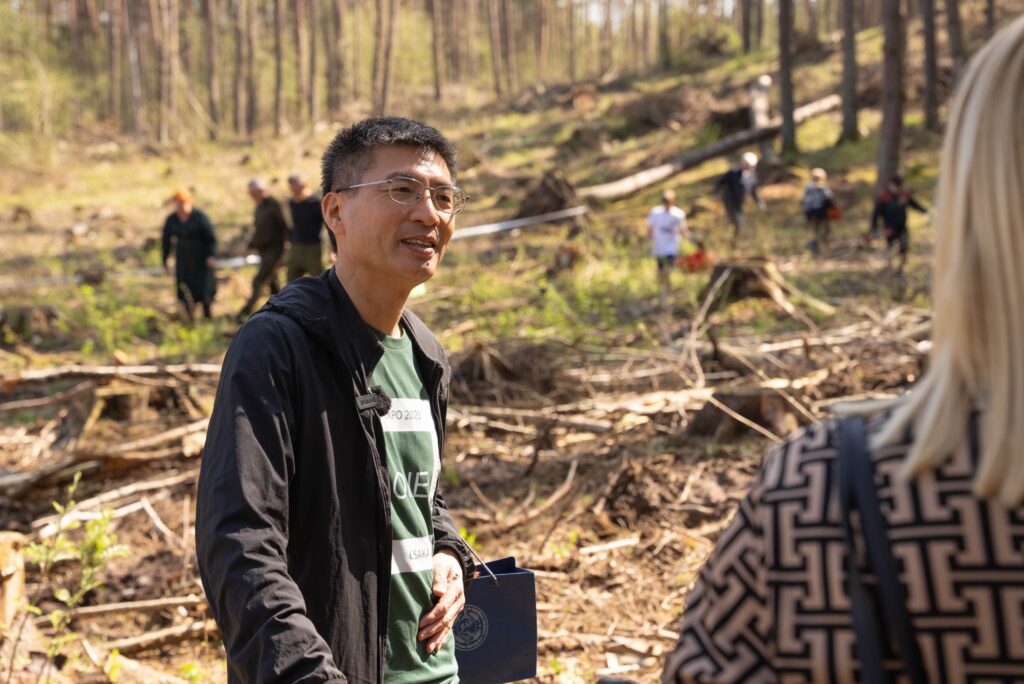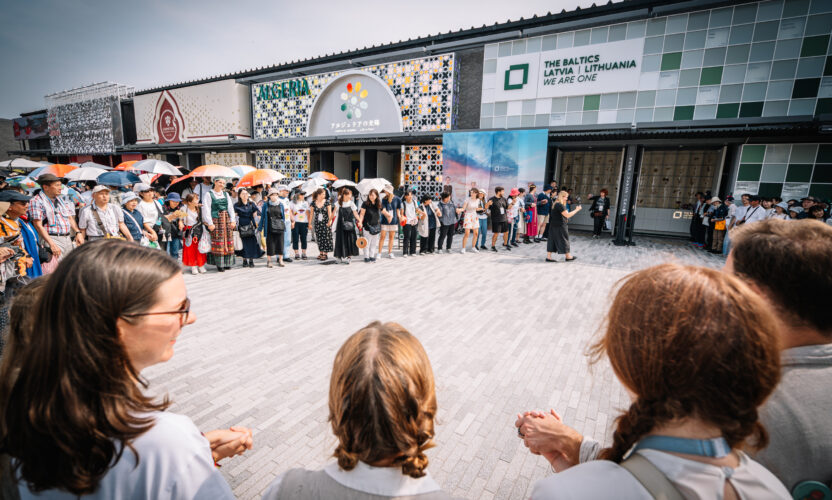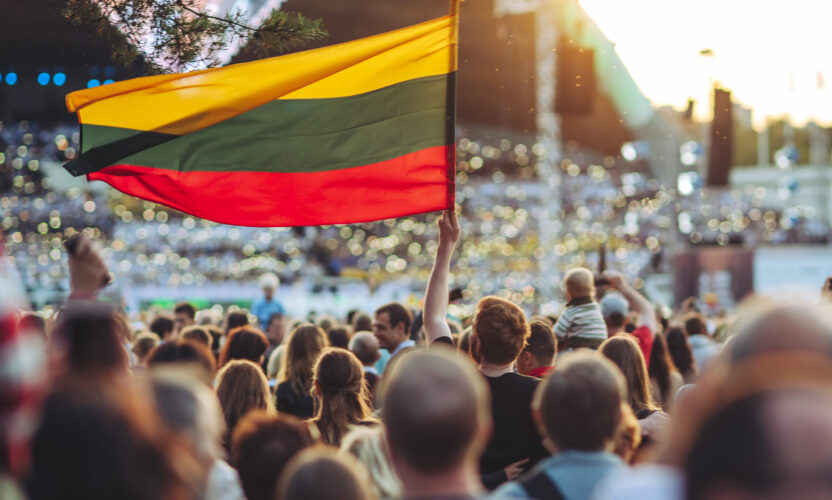
At EXPO 2025 in Osaka, Lithuania and Latvia are jointly represented in the Baltic Pavilion, where visitors are invited to take part in a unique initiative promoting environmental sustainability and unity: planting a tree in the forests of the Baltic States.

On 5 May, Lithuania’s EXPO 2025 team, together with Government Chancellor Laimonas Rudys, Counsellor at the Embassy of Japan in Lithuania Takashi Niinuma, and representatives of the State Forest Enterprise, officially launched the Kizuna Osaka Forest project in Lithuania. Trees were planted in the Trakai District, marking the beginning of a broader tree-planting initiative. The Japanese word kizuna, meaning “bond”, symbolises emotional ties and human connection.
On April 23 Osaka Forest “Kizuna”, was planted in Tērvete, Latvia. In a ceremonial event in Latvia, the first pine trees of a newly established forest were planted by Minister of Economics Viktors Valainis, Minister of Agriculture Armands Krauze, and Ambassador of Japan to Latvia Yoshida Kensuke.

We invite visitors to EXPO 2025 in Osaka to plant a virtual tree in Latvia and Lithuania. Each tree planted virtually at the Baltic Pavilion will later be physically planted by foresters in one of our national forests. Every tree is a symbol of our shared responsibility for the planet’s future.
Participants in the initiative receive a digital certificate indicating the exact coordinates of their planted tree.
This tree-planting initiative is a central part of the Baltic Pavilion’s narrative, We Are One, which presents Lithuania and Latvia as modern, forward-looking nations committed to sustainability and deeply connected to nature.

“The concept behind our participation – We Are One – sends a clear message: our decisions have global consequences. We are all interconnected and jointly responsible for the Earth we will pass on to future generations,” said Lina Antanavičienė, Lithuania’s Commissioner General for EXPO 2025 in Osaka.
In Lithuania, participants are planting birch and spruce trees; in Latvia, pine trees. Mixed-species forests help increase resilience to disease and the impacts of climate change. Birch and spruce reflect Lithuania’s national identity and its ties to Northern Europe. Planting sites include the districts of Trakai, Joniškis, and Tauragė.
“The forests of the Baltic States are a unique natural treasure, home to a wide range of ecosystems — from coniferous to deciduous and mixed woodlands — rich in biodiversity and ecological value. We are pleased that visitors to EXPO 2025 are contributing to the creation of more resilient forests, a goal that has become increasingly urgent in light of recent climate-related damage to coniferous stands,” said Valdas Kaubrė, Director General of the State Forest Enterprise.
Since the launch of the initiative, visitors to the Baltic Pavilion have already virtually planted more than 50,000 trees in the forests of Lithuania and Latvia. The global EXPO 2025 exhibition runs in Osaka, Japan, from 13 April to 13 October 2025, with participation from over 160 countries and nearly 30 million visitors expected.


